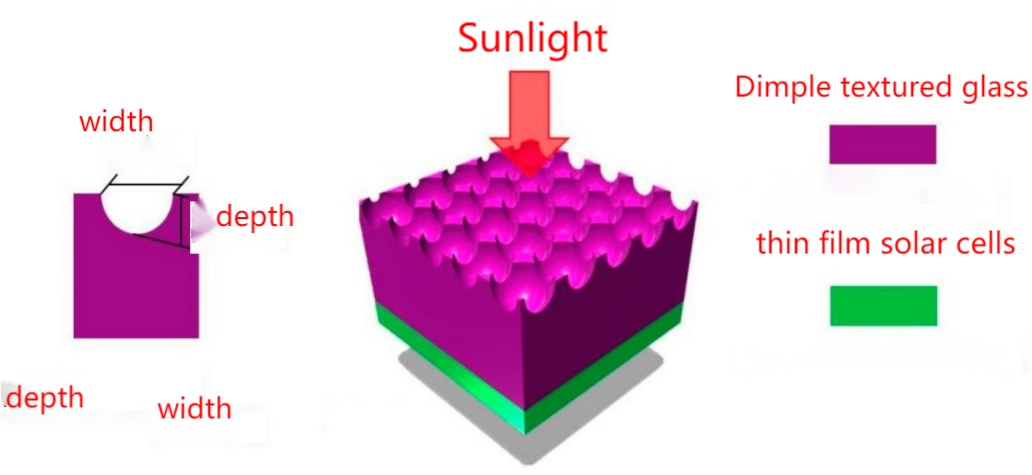Generally speaking, in order to more directly improve the photoelectric conversion rate of solar cells and maximize their efficiency in practical applications, battery manufacturers need to use physical means to prepare textured light-trapping structures on the surface of solar cells.
Textured light trapping structure and its principle
The textured light-trapping structure is a surface structure composed of micron or nanoscale protrusions or depressions, which can effectively reduce the reflection of light, increase the scattering and coupling of light, thereby increasing the light absorption rate. The textured light-trapping structure can be applied to different types of solar cells, such as crystalline silicon solar cells, amorphous silicon solar cells, perovskite solar cells, etc.
 Textured light trapping structure diagram
Textured light trapping structure diagram
The principle of the textured light-trapping structure is to use phenomena such as refraction, reflection, scattering and interference of light to change the propagation path of light on the surface of the solar cell, increase the residence time of light inside the solar cell, and thereby increase the light absorption rate. Parameters such as the morphology, size, distribution and uniformity of the textured light-trapping structure will affect the propagation characteristics of light, thereby affecting the degree of improvement in light absorption rate. Generally speaking, the height of the textured light-trapping structure should be greater than the wavelength of light to increase light scattering; the spacing of the textured-surface light-trapping structure should be smaller than the wavelength of light to increase light coupling; the shape of the textured-surface light-trapping structure should be Make it as complex as possible to increase interference of light.
How to evaluate the performance of textured light trapping structure?
The performance evaluation of the textured light-trapping structure is mainly carried out by measuring the light absorption rate, reflectivity, short-circuit current density, open circuit voltage, fill factor, photoelectric conversion rate and other parameters of the solar cell, and compared with the solar cells without the textured light-trapping structure. Compare and analyze the impact of the textured light-trapping structure on the performance of solar cells. Since the textured light-trapping structure can significantly reduce the reflectivity of the solar cell, it can indirectly increase the light absorption rate and short-circuit current density of the solar cell, thereby improving the photoelectric conversion efficiency of the solar cell. However, the textured light-trapping structure may also cause a reduction in the open circuit voltage and fill factor of the solar cell, thereby reducing the photoelectric conversion rate of the solar cell. Therefore, the preparation of textured light-trapping structures requires weighing various factors to achieve optimal performance.
How to optimize the design of textured light-trapping structure?
The design of the textured light-trapping structure is mainly through numerical simulation or experimental optimization methods to find the best parameters such as morphology, size, distribution and uniformity of the textured light-trapping structure to maximize light absorption and photoelectricity. Conversion rate. Numerical simulation methods can be implemented through finite element method, finite difference time domain method, rigid sphere approximation method, etc., which can quickly and readily calculate the impact of different textured light trapping structures on light absorption, thereby guiding textured light trapping. Optimal design of structure. The experimental optimization method is to change the preparation process parameters of the textured light-trapping structure, prepare different textured light-trapping structure samples, and measure their light absorption rate and photoelectric conversion rate to find the best textured light-trapping structure sample.
The textured light-trapping structure can also be designed after measurement with precision solar cell testing equipment. The number of textured pyramids and the height of a single pyramid in the detection area can be objectively and clearly understood. The measured data can then be compared one by one to determine It can achieve scientifically based design of the textured light-trapping structure.